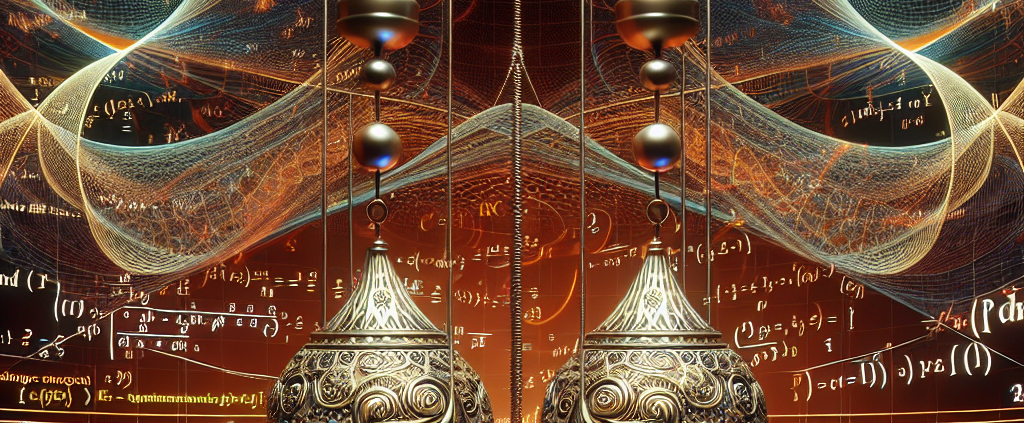Mastering the Double Pendulum Problem with Python Code
Solving the Double Pendulum Problem with Python
Exploring the Chaos and Order in Physics with a Touch of Code
Introduction
The double pendulum problem is a classic example of a chaotic system in physics. While a simple pendulum has a regular, predictable motion, adding another pendulum to the end creates a system that is fascinatingly complex. The double pendulum’s motion depends on its initial conditions, and even tiny differences can result in vastly different trajectories. This complexity makes it an excellent subject for computational modeling and simulation.
In this article, we’ll delve deep into the mathematics of the double pendulum and how we can simulate its behavior using Python. As someone who recently graduated from Harvard University with a master’s focusing on Artificial Intelligence and Machine Learning, and having a professional background in solutions architecture and cloud solutions, I find the intersection of complex systems like these and programming to be an exhilarating space for exploration and creativity.
The Double Pendulum: A Brief Overview
A double pendulum consists of two pendulums attached end to end. The motion of the double pendulum is governed by a set of equations that account for gravitational forces, mass, and the angles of the two arms. The complexity and unpredictability of the double pendulum arise from its sensitivity to initial conditions.
Mathematical Foundation
To model the double pendulum’s motion, we need to understand the equations that govern its dynamics. The positions of the pendulums can be described by two angles, \( \theta_1 \) and \( \theta_2 \). The equations of motion for the double pendulum are derived from the Lagrangian mechanics and can be represented as a set of non-linear differential equations.
Implementing the Simulation in Python
Python, with its rich ecosystem of scientific computing libraries, provides a perfect environment for simulating complex systems like the double pendulum. We’ll use the NumPy and Matplotlib libraries for our simulation.
Required Libraries
First, ensure that you have NumPy and Matplotlib installed:
pip install numpy matplotlibDefining the Equations of Motion
We start by defining the equations of motion derived from the Lagrangian mechanics. Note, these equations have been simplified for brevity:
import numpy as np
def equations_of_motion(state, t, L1, L2, m1, m2, g=9.81):
theta1, z1, theta2, z2 = state
c, s = np.cos(theta1-theta2), np.sin(theta1-theta2)
theta1_dot = z1
z1_dot = (m2*g*np.sin(theta2)*c - m2*s*(L1*z1**2*c + L2*z2**2) -
(m1+m2)*g*np.sin(theta1)) / L1 / (m1 + m2*s**2)
theta2_dot = z2
z2_dot = ((m1+m2)*(L1*z1**2*s - g*np.sin(theta2) + g*np.sin(theta1)*c) +
m2*L2*z2**2*s*c) / L2 / (m1 + m2*s**2)
return theta1_dot, z1_dot, theta2_dot, z2_dotSimulating the Motion
With the equations of motion defined, we can use the odeint solver from scipy.integrate to simulate the system’s behavior over time:
from scipy.integrate import odeint
# Initial conditions: theta1, dtheta1/dt, theta2, dtheta2/dt
initial_conditions = [np.pi/2, 0, np.pi, 0]
# Time vector
t = np.linspace(0, 20, 250)
# Parameters
L1, L2, m1, m2 = 1.0, 1.0, 1.0, 1.0
# Solve ODE
solution = odeint(equations_of_motion, initial_conditions, t, args=(L1, L2, m1, m2))
# Extracting angles
theta1, theta2 = solution[:, 0], solution[:, 2]Visualizing the Simulation
Finally, let’s visualize the motion of the double pendulum over time:
import matplotlib.pyplot as plt
from matplotlib.animation import FuncAnimation
fig, ax = plt.subplots()
ax.set_xlim((-2, 2))
ax.set_ylim((-2, 2))
line, = ax.plot([], [], 'o-', lw=2)
def init():
line.set_data([], [])
return line,
def animate(i):
x1, y1 = L1 * np.sin(theta1[i]), -L1 * np.cos(theta1[i])
x2, y2 = x1 + L2 * np.sin(theta2[i]), y1 - L2 * np.cos(theta2[i])
line.set_data([0, x1, x2], [0, y1, y2])
return line,
ani = FuncAnimation(fig, animate, frames=len(t), init_func=init, blit=True)
plt.show()In the above code, we animated the double pendulum’s motion based on the results from our simulation. The animation will visualize how the pendulum evolves over time, providing insight into the chaotic nature of this fascinating system.
Conclusion
The double pendulum problem offers a compelling look into the chaotic dynamics that can arise from seemingly simple systems. Through computational simulations in Python, we not only gain insights into the physics governing the double pendulum but also appreciate the power of programming in understanding complex phenomena. This project, much like my ventures in AI and consulting through DBGM Consulting, Inc., and my creative pursuits in photography and music, embodies the intersection of technology and art—an area I find profoundly inspiring.
“`




Leave a Reply
Want to join the discussion?Feel free to contribute!